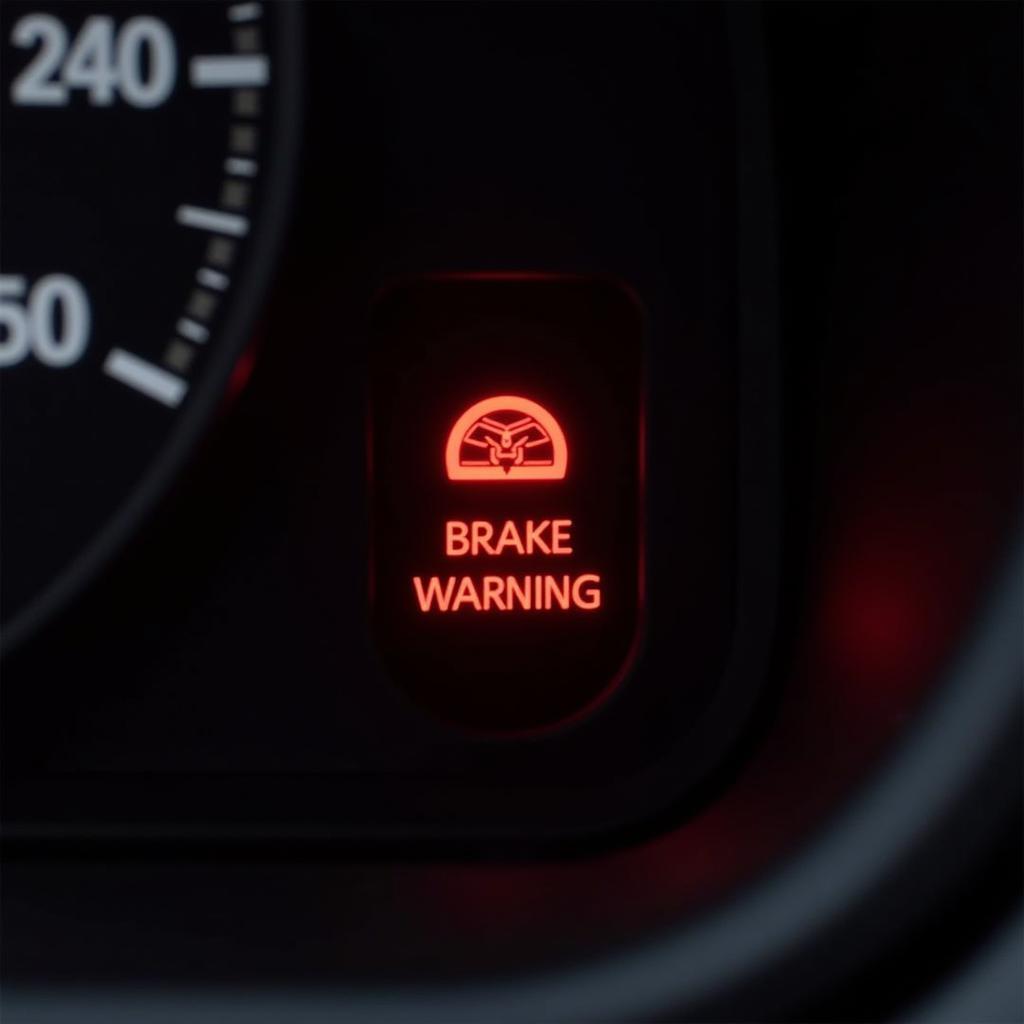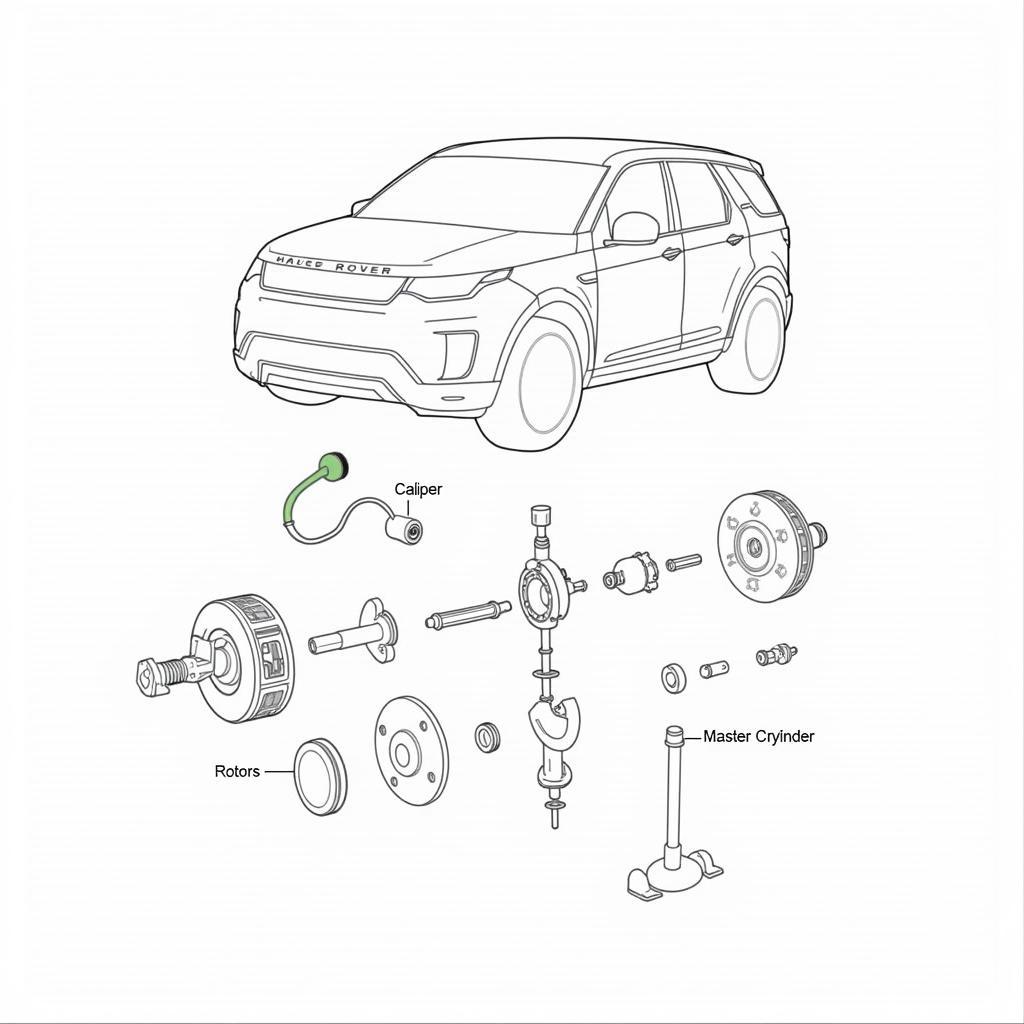The brake warning light on your Nissan Quest dashboard is a crucial safety feature. When illuminated, it signals a potential problem with your braking system that requires immediate attention. Ignoring this warning light can compromise your ability to stop safely and increase the risk of accidents.
 Nissan Quest Brake Warning Light on Dashboard
Nissan Quest Brake Warning Light on Dashboard
Common Causes of a Nissan Quest Brake Warning Light
Several factors can trigger the brake warning light in your Nissan Quest. These include:
-
Low Brake Fluid: This is the most common culprit. Brake fluid is essential for transmitting force from the brake pedal to the wheels, enabling your vehicle to stop. A leak in the brake lines or a worn-out master cylinder can lead to low brake fluid levels, triggering the warning light.
-
Worn Brake Pads: Brake pads are designed to wear down over time. When they become too thin, a sensor within the brake pad assembly will activate the warning light, indicating the need for replacement.
-
Faulty Brake Light Switch: The brake light switch is responsible for activating your brake lights when you press the pedal. A malfunctioning switch can disrupt the brake light circuit, often triggering the brake warning light on the dashboard.
-
ABS Issue: While less common, a problem with the Anti-lock Braking System (ABS) can also trigger the warning light. This is often accompanied by an additional ABS warning light on the dashboard and may require a professional diagnosis to pinpoint the specific issue.
Troubleshooting a Nissan Quest Brake Warning Light
Before you call a mechanic, here are some initial steps you can take to try and troubleshoot the issue:
-
Check Your Brake Fluid Level: Park your Nissan Quest on a level surface and locate the brake fluid reservoir under the hood. Carefully remove the reservoir cap and check the fluid level. It should be between the minimum and maximum lines marked on the reservoir. If the fluid is low, adding more brake fluid might temporarily address the issue, but it’s crucial to have a mechanic inspect the system for leaks.
-
Inspect Your Brake Lights: Ask someone to press the brake pedal while you check if all brake lights (including the center high mount stop lamp) are functioning correctly. If they are not, the brake light switch might be faulty and require replacement.
-
Listen for Unusual Noises: Pay close attention to any unusual sounds emanating from the brakes when applying the pedal. Grinding, squealing, or clicking noises can indicate worn brake pads or other brake component issues that require immediate attention.
“A visual inspection of your brake pads can also be helpful,” advises John Miller, a seasoned automotive technician with over 20 years of experience. “If you see less than a quarter-inch of brake pad material remaining, it’s time for a replacement.”
When to Seek Professional Help
While these troubleshooting steps can be helpful, it’s important to remember that they are preliminary assessments. If the brake warning light remains illuminated, it’s essential to consult a qualified mechanic experienced in Nissan vehicles for a comprehensive diagnosis and repair.
Attempting to diagnose or repair complex brake system issues yourself can be dangerous and lead to further damage if not performed correctly. Addressing brake problems promptly and professionally ensures your safety and prevents more costly repairs down the road.
Frequently Asked Questions (FAQ)
Q: Can I drive my Nissan Quest with the brake warning light on?
A: It is strongly advised against driving with the brake warning light illuminated. Doing so compromises your safety and could result in brake failure.
Q: How often should I check my brake fluid level?
A: It’s recommended to check your brake fluid level at least once a month and more frequently if you notice any changes in brake pedal feel or responsiveness.
Q: How much does it cost to replace brake pads on a Nissan Quest?
A: The cost of brake pad replacement varies depending on factors such as the specific model year of your Nissan Quest, the type of brake pads used, and labor costs in your area.
Q: How long can I drive on worn brake pads?
A: Driving on worn brake pads is highly unsafe and can damage other brake components, leading to more expensive repairs. Replace worn brake pads immediately.
Conclusion
The brake warning light on your Nissan Quest is a crucial safety indicator that should never be ignored. By understanding its potential causes and taking appropriate action, you can help ensure the proper functioning of your vehicle’s braking system and maintain safe driving conditions. If you’re unsure about any aspect of your Nissan Quest’s brake system, always consult a qualified mechanic for professional assistance.
Remember, regular maintenance and timely repairs are essential for preserving the longevity and safety of your vehicle. You can find more information about brake warning lights on other Nissan models, like the Nissan Frontier, by clicking this link: 2008 nissan frontier brake warning light. For issues related to multiple warning lights, you might find this resource helpful: nissan warning lights battery brake.

